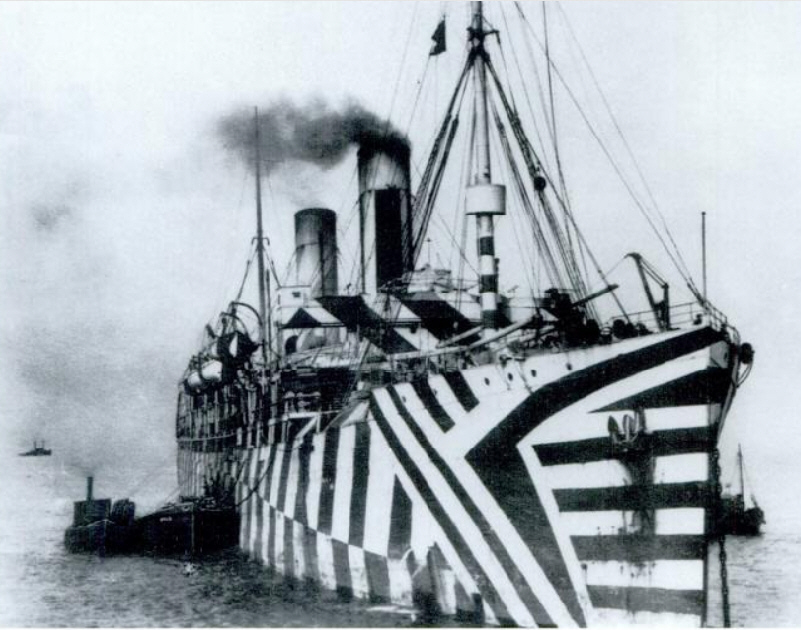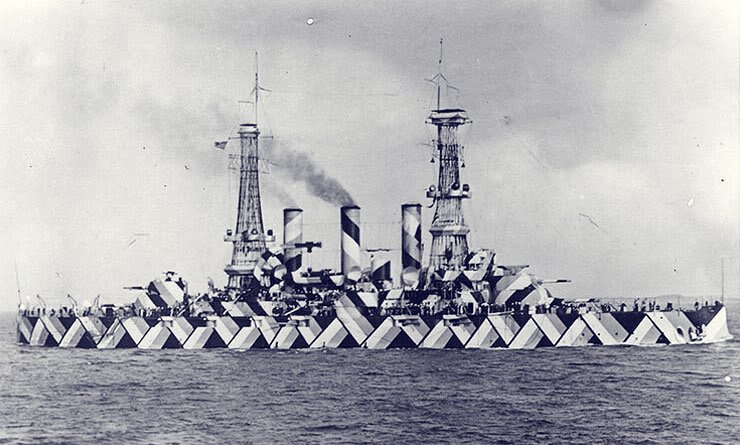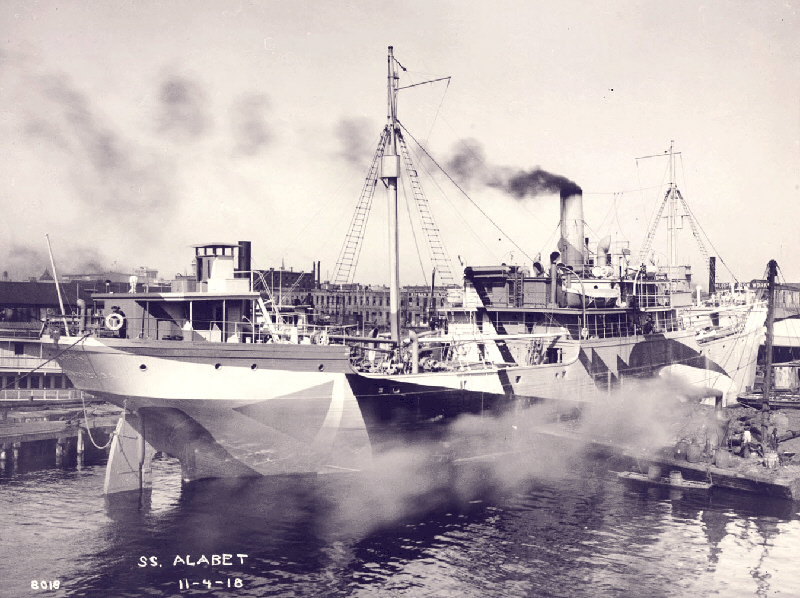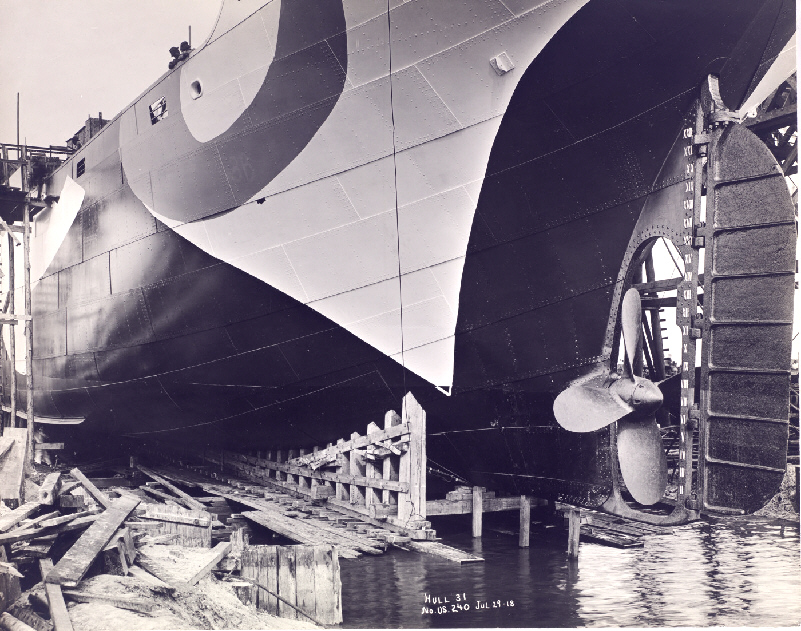Click on Image to Expand

British RN Troopship Walmer Castle
The father of dazzle camouflage, Norman Wilkinson, was a marine painter in the Royal Navy. His idea was not to make ships invisible, but to make it hard for U-boat skippers to precisely measure the speed, direction, and future position of any ships he was intending to blast with a torpedo. He convinced his superiors to allow him to test his idea. When the test went well, Wilkinson was told to proceed and hired Vorticist artist Edward Wadsworth to be a port officer in Liverpool, England, and oversee the painting of the dazzle ships.
Click on Image to Expand

Pre-Dreadnought Battleship USS Nebraska
Over 4,000 British ships received the dazzle treatment. In 1918 Wilkinson came to United States to share his dazzle schemes. About 1,000 plans were developed through this partnership.
Click on Image to Expand

SS Alabet (Note the Move Away from the Stripe Design)
Did it work? Dazzle and the convoy system were implemented about the same time, so it is hard to say. One Royal Navy postwar report was positive, stating that only 1 percent of the dazzle camouflaged ships (say, about 40 of 4000?) were sunk. However, there were no figures for non-camouflaged ships to compare results.
Click on Image to Expand

Hull of SS Everglades, First Ship to Receive Dazzle Treatment During Construction
Dr. Nicholas Scott-Samuel of the University of Bristol, however, recently expressed some skepticism about the benefits of dazzle — at least for ships. He reported in the Public Library of Science that participants in a recent series of experiments were not fooled by slow-moving rectangles, nor by low-contrast ones. Fast-moving, high-contrast shapes like the designs on dazzle ships, however, did befuddle them. On average, observers underestimated the speed of fast moving, jazzy rectangles by 7 percent. The point here is that oceangoing ships of the WWI period were not very fast and so the test results suggest the dazzle effect was not very helpful. The crews, however, were reportedly very proud of their flashy-looking ships.
Sources: The Economist, Dazzle.risd.edu

the original psychedelia.
ReplyDeleteThe analysts in the surface ship shop of NISC loved the dazzle designs. They were so unique and made it hard for range finders to identify angles and waterline lengths of the ships.
ReplyDeleteGuy Hartcup in his book "Camouflage" (David & Charles, 1979) says "Post-war research seemed to support the sceptics and in 1931, when German evidence had been sifted, the verdict was that it was doubtful whether any submarine commander had misjudged his target's course and speed through dazzle painting alone". Even during the war there was considerable scepticism, it being felt (says Hartcup) that (a) at night - a frequent time for U-boat attacks - the 'dazzle' actually made the ship more visible, and (b) by the time the U-boat was close enough to fire a torpedo, it was also close enough for the ship's outline to be obvious despite the dazzle. In the end dazzle was mostly retained for morale purposes - because it made ship's captains (and no doubt crews) feel safer.
ReplyDelete